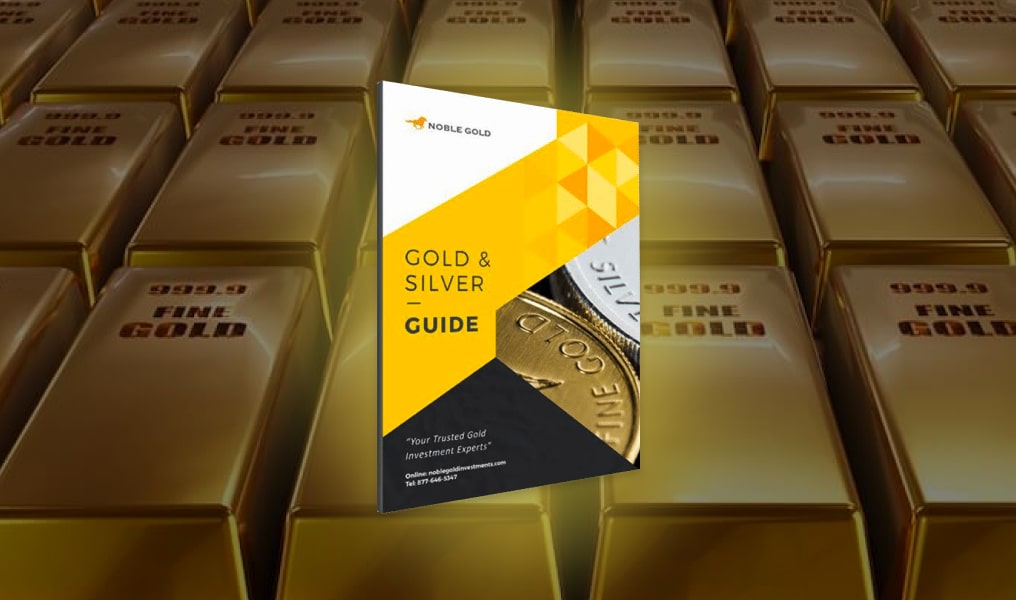Silver bars and silver coins are two of the most popular precious metal investment options – but you may be wondering if one is a better option than the other. Both offer unique advantages and drawbacks that must be considered when making an investment decision.
If you’re torn about which investment is right for you and your investment portfolio, we’ve put together this in-depth comparison of silver bars vs. silver coins to give you a better understanding of the pros and cons of each so you can make an informed investment decision.
Why Invest In Silver Bars?
Silver bars are produced by private mints or refineries worldwide and come in various sizes ranging from one gram up to several kilograms in weight. Silver bars can also be produced with different purities, however, .999 silver is considered the purest.
The purity is usually stamped onto each bar along with its weight, serial number, and manufacturing place. Generally speaking, larger silver bars are less expensive per ounce than smaller ones due to economies of scale regarding production costs.
Advantages of Investing in Silver Bars
Silver has historically been used as a store of value and can be an excellent addition to any portfolio. Some advantages of investing in silver bars include the following.
Cost-Effectiveness
Silver bars tend to be more cost-effective than coins when purchasing the same amount of metal. This is because they typically come in larger sizes than coins, so you can buy more for your money. For example, a 1 oz silver bar may cost less than ten individual 1/10 oz silver coins combined.
Easier to Store and Transport
Silver bars also take up less space than coins due to their uniform shape and size, making them easier to store or transport if needed. This makes them ideal for those who don’t want the hassle of dealing with multiple smaller items or who don’t have much storage space available at home or elsewhere.
Higher Liquidity
Silver bars generally have higher liquidity values than other investment forms, such as stocks or bonds, since they can easily be converted into cash on short notice without any significant loss in value. This makes them attractive investments for those looking for quick access to funds during financial uncertainty or market volatility.
Disadvantages of Investing in Silver Bars
While silver bars do offer a variety of benefits, there are some potential drawbacks that you should consider before investing.
Risk of Counterfeiting or Fraudulent Products
One of the main disadvantages of investing in silver bars is the risk of counterfeiting or fraudulent products. Silver bars may look identical but may have different levels of purity and content, so it’s important to buy from reputable dealers who guarantee authenticity. It’s also important to research any dealer before purchasing and verify any bar’s weight, fineness, and serial number if applicable.
Difficulty Selling Smaller Quantities at Once
It can be challenging to sell smaller quantities of silver bars at once due to their higher premiums over spot price compared to coins which typically carry lower premiums for smaller amounts. If you want to liquidate only part of your holdings quickly, selling off small amounts may not be feasible since they will likely fetch less than larger quantities on the open market.
Lower Resale Value
Another downside is that silver bars tend to have lower resale values than coins due to wear and tear over time, such as scratches or dents caused by handling them frequently when moving them around for storage purposes.
This makes them more susceptible to devaluation when sold back into the market, so buyers should consider this when deciding whether or not they wish to invest in physical silver bars versus coins, which retain their value better over time, even with frequent handling and transportation.
A Look At Silver Coins
Silver coins have been used for centuries as currency, but they can now be bought for investment purposes. These coins contain a certain amount of pure silver, which is often marked on them along with their face value, determined by the government of the country where it was minted (e.g., U.S.-minted American Eagle coins have a face value of $1).
Some countries even produce special commemorative editions with unique designs or images related to national events like anniversaries or holidays. These tend to carry higher premiums over regular issues due to increased demand among collectors looking for something rarer than standard coinage options available at banks or post offices worldwide.
Advantages of Investing in Silver Coins
Investing in silver coins can be a great way to diversify your portfolio and protect against inflation. Silver coins offer several advantages over investing in silver bars, such as easier selling of smaller quantities at once, higher resale value due to collectible value and rarity factors, and better protection against counterfeiting or fraudulent products.
Easier to Sell Smaller Quantities
Silver coins are much easier to sell than bars in smaller quantities. This is because they are more easily divided into smaller amounts without additional equipment like scales or melting down larger pieces of metal. For example, if you have five ounces of silver coins, you can easily break them up into one-ounce increments that can be sold individually without hassle.
Higher Resale Value than Bars
Silver coins often carry a higher resale value than their bar counterparts due to their collectible value and rarity factors associated with certain coins. For instance, some rarer dates or mints may command a premium price from collectors willing to pay more for these unique items compared with generic bullion products that don’t carry the same appeal or historical significance as those found on certain coinage issues.
Better Protection Against Counterfeits
Investing in silver coins also offers better protection against counterfeiting or fraudulent products than buying silver bars, as each coin has unique design features, making it difficult for criminals to produce counterfeit versions undetected by authorities.
Furthermore, reputable dealers will only stock genuine product lines, so buyers should always ensure they purchase from trusted sources before making any purchases online or offline.
Disadvantages of Investing in Silver Coins
While there are advantages to silver coins, some drawbacks should be considered before investing in them.
More Expensive than Buying Bars
Silver coins tend to cost more than buying the same amount of silver in bar form due to higher production costs associated with minting them. This means you will have to pay a premium for each coin, which can add up if you’re looking to buy larger quantities.
Difficult to Store and Transport Larger Quantities
Silver coins are smaller and lighter than bars, but they still take up space when stored or transported. If you plan on buying large amounts of silver coins, it may not be practical or feasible depending on where you live or how much storage space is available.
Lower Liquidity Value
When selling your silver investments, it is important to consider liquidity value – how easy it is for buyers to purchase what you’re offering without impacting price levels. Generally speaking, bars offer greater liquidity value than coins since they come in larger sizes and require less buyer effort when making purchases.
Tax Implications for Both Investment Options
When investing in silver bars or coins, it’s important to consider the tax implications of each option. Understanding the capital gains taxes and reporting requirements for both assets and any potential tax benefits from investing in an IRA with precious metals is essential.
Capital Gains Tax
When investing in silver bars or coins, it is important to understand the capital gains tax implications. Capital gains taxes are imposed when an asset is sold for a profit. This means that if you buy silver at one price and then sell it later for more than what you paid, you will be subject to paying capital gains taxes on the difference between the two prices.
The amount of tax owed depends on your income bracket and other factors, such as how long you held onto the investment before selling it.
Tax Benefits Of Investing In A Precious Metals IRA
An alternative way to invest in precious metals is through an Individual Retirement Account (IRA).
With this option, investors can purchase gold, silver, platinum, or palladium within their retirement account without paying immediate taxes on their investments. This allows them to save money while taking advantage of potential growth opportunities with precious metals investments. Any profits from these investments aren’t subject to capital gains taxes until they’re withdrawn from the IRA during retirement age.
Reporting Requirements
It’s also important to note that all purchases of physical silver, whether bars or coins, must be reported by financial institutions by filing Form 1099-B when certain thresholds have been met ($600 per transaction).
Investors should keep track of all transactions involving precious metals to report them during tax time each year accurately.
Buy Silver Coins & Silver Bars In An IRA
If you’re looking for an alternative way to invest in silver, consider investing in a silver IRA with SpaceXgold. We have a huge variety of IRA-approved silver bars and silver coins that you can purchase directly in your IRA so that you can realize both long-term and short-term tax advantages from your investment. Give us a call today to learn more about our gold and silver IRA from one of our IRA experts.






